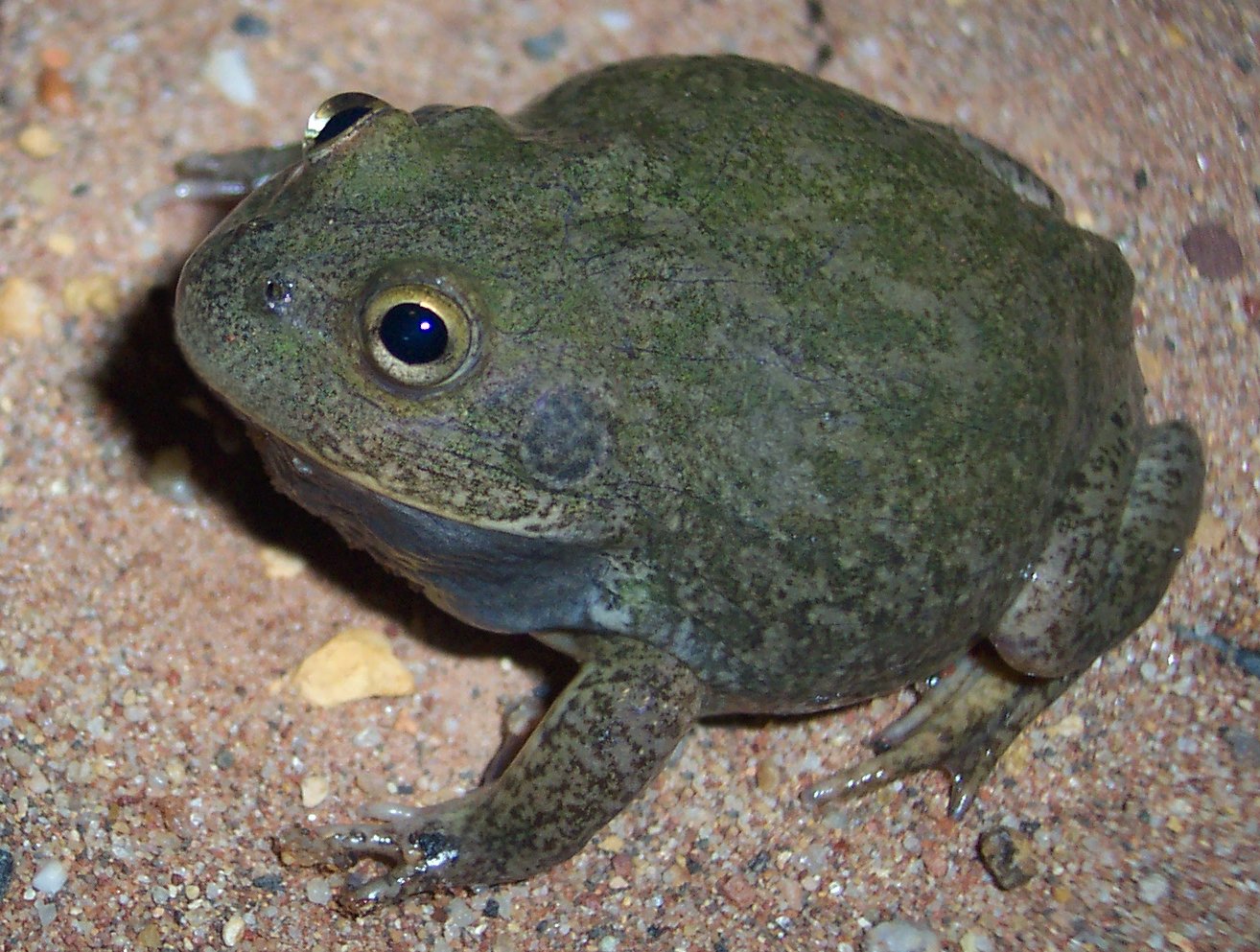- Cyclorana platycephala
Taxobox
name = "Cyclorana platycephala"
status = LC | status_system = IUCN3.1

image_caption =
regnum =Animal ia
phylum = Chordata
classis =Amphibia
ordo =Anura
familia =Hylidae
genus = "Cyclorana "
species = "C. platycephala"
binomial = "Cyclorana platycephala"
binomial_authority = Günther, 1873"Cyclorana platycephala", the Water-holding Frog, is a frog common to most
australian states. It differs from most other members of theHylidae family as a ground dweller and the ability to hibernate.Description
The species has populations spread across all the Australian states except Victoria. It occupies a wide range of habitat from forests of tropical swamp to intermittent pools and lowland grass country; all habitat is assumed to be of a low elevation. Populations are assumed to be large from frequent reports and a broad range. This range is assumed to overlap with National parks, but research has not been undertaken into the ecology and biology of the species.
Threatened status
No threats have been identified, research into the extent of habitat loss through land clearing and the associated
salinity is yet to be undertaken. The species is givenLeast Concern status at theIUCN Red List due to a wide range and large population.Further reading
* Cogger, H.G. 2000. Reptiles and Amphibians of Australia, Sixth Edition. Reed New Holland, New South Wales.
References
*cite web| url = http://www.iucnredlist.org/search/details.php/41076/all | title = Cyclorana platycephala. In: IUCN 2006. 2006 IUCN Red List of Threatened Species. | accessdate = 2007-04-07 | author = Hero, J.-M., | coauthors = Clarke, J., Meyer, E., Retallick, R., Horner, P. & Roberts, D. | year = 2004 |
*cite web | url = http://amphibiaweb.org/cgi/amphib_query?query_src=aw_search_index&max=200&where-genus=Cyclorana&where-species=platycephala | title = Cyclorana platycephala Water-holding Frog | accessdate = 2007-04-07 | author = Hero, J M | coauthors = et al | date = 2002-04-05 | format = | work = AmphibiaWeb | publisher = Berkeley (The Regents of the University of California) | pages = | language =
quote = There are three separate populations. One in the central arid zone of Western Australia from Winning Pool east to Lake Disappointment and south to Morawa and Laverton. There is a small area in the north-western corner of the Northern Territory. Another large area extends from northern South Australia into New South Wales and south-western Queensland. The extent of occurrence of the species is approximately 1645500 km². Widely dispersed in habitat.
Wikimedia Foundation. 2010.
